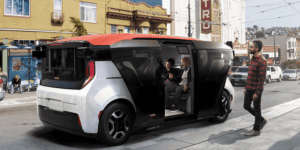
The issue for many car manufacturers is the amount of resources needed to reach the level of sophistication of the leading self-driving solutions.
The mid-2010s were filled with press releases from car manufacturers and technology companies preaching of the oncoming self-driving future, with Ford, Mercedes, and Hyundai all anticipating 2020 to be the year that autonomous vehicles hit the mainstream.
Three years on from the promised date, and we appear to be no closer to self-driving cars pushing humans off the road. If anything, the general consensus has leapt to the other polar extreme, with tech columnists arguing that self-driving was a $100 billion mistake and may not be implemented for decades, if at all.
SEE ALSO: New Technology Brings Fully Autonomous Driving Closer
Development of autonomous car systems has slowed down somewhat in the past half decade, with the coronavirus pandemic and switch in focus by car manufacturers to electric vehicles reducing the amount of resources and companies in the space. Uber and Lyft both shut their self-driving divisions, while Ford and Volkswagen closed their self-driving hub Argo AI in 2022.
The issue, for many car manufacturers, is the amount of resources needed to reach the level of sophistication of Waymo and Cruise’s self-driving solution. Several have closed their own operations in favor of partnering with a software operator, such as Aurora, Cruise, Mobileye, or Zoox. There has also been a shift in the urgency of reaching first place, as it appears likely that the software will be road-ready far before national regulators greenlight it.
This is due to the fear surrounding self-driving vehicles, and the negative press they have received. Accidents involving autonomous vehicles receive far more media attention than road accidents involving human drivers, and this has led to growing concerns of self-driving vehicles. It is likely that these cars will need to be better than human drivers by several orders of magnitude, before regulators permit them on all roads.
Waymo, Cruise, Tesla, Mobileye, and Baidu are considered the leaders in self-driving technology. Out of the five, Waymo and Cruise are both aiming for level five autonomous driving, defined by the Society of Automotive Engineers as when a vehicle performs all motor functions with zero human attention or interaction required. Tesla and Mobileye, on the other hand, are building driver assistance services, while building up to the higher levels of autonomy in the future.
While it may be argued that self-driving vehicles will never make it out of controlled testing, there are signs that regulators are reducing the amount of red tape for these operators. In some countries and US states, operators are now able to run tests without a human in the front seat, and are even able to charge members of the public fares.
Waymo anticipates a tenfold increase in rides in the next two years, while Cruise is aiming for $1 billion in revenue from rides by 2025. That infers a huge increase in the availability of self-driving vehicles to the general public, and a breakdown of some of the barriers which have kept users away from these vehicles.
There’s also China to think about, which has some of the largest self-driving operations in the world, coming from Baidu, WeRide, AutoX, and Pony.ai. The US and Europe may suffer from over-regulation, but in China, there appears to be more of a push by lawmakers to get self-driving cars on the road. Chinese citizens are also less fearful of self-driving than the US and Europe.
Once self-driving in China becomes normalized, we may see a change in attitudes by regulators outside of China. This is especially true if China’s automotive manufacturers continue to see growth in South-east Asia and Europe, which has been the case in the past half decade as China’s electric vehicle manufacturers have seen exports increase rapidly.
However, the US may not need videos of Chinese citizens taking rides in autonomous cars to reverse the fear. As Waymo, Cruise, and others expand the size of their trials and launch in more states, this hesitation around riding in a self-driving vehicle should subside, at least for those that want to try it.
It will still be some time before self-driving will come as standard in a new car, but ride-hailing services could integrate self-driving vehicles into their fleet in the next few years, especially in specific markets such as California where self-driving laws are the most progressive.




























